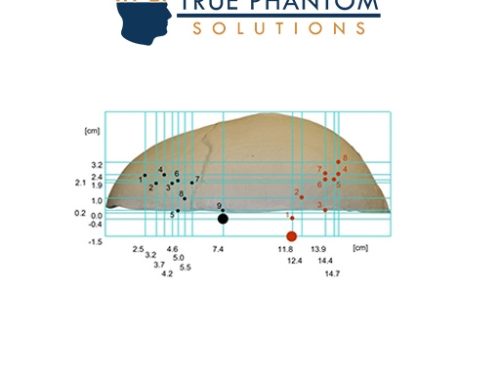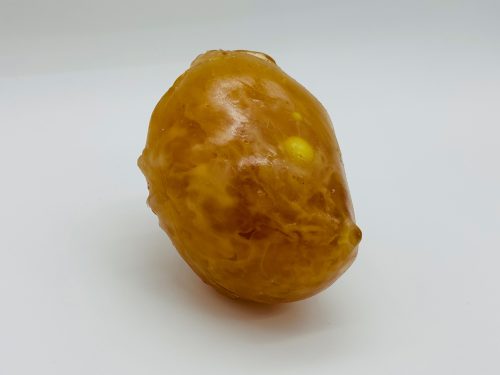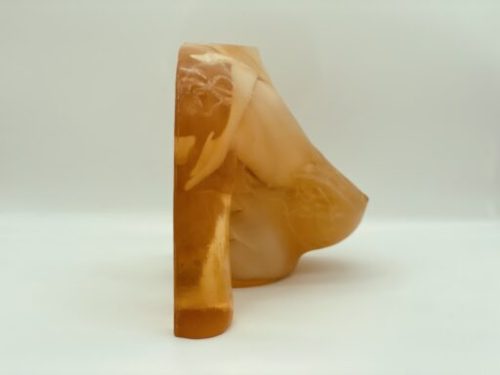-
 The Adult Torso (Skin) phantom is designed for X-Ray CT and Ultrasound training. It accurately replicates the anatomy of a healthy adult male, featuring a realistic skeleton and customizable pathologies. It is an ideal tool for ultrasound technicians and medical students, with a skin-colored appearance.
The Adult Torso (Skin) phantom is designed for X-Ray CT and Ultrasound training. It accurately replicates the anatomy of a healthy adult male, featuring a realistic skeleton and customizable pathologies. It is an ideal tool for ultrasound technicians and medical students, with a skin-colored appearance. -
 The Adult Full Body Phantom with Muscles is a versatile training product compatible with X-Ray/CT and Ultrasound. It is designed to mimic the major muscle structures in the arms and legs. The phantom is primarily used for training and demonstrating patient positioning techniques in radiology and provides hands-on experience with diagnostic imaging. The skeleton is made of individually cast bones with adjustable properties, and the phantom can be customized with various pathologies. It is available in transparent or skin-coloured versions.
The Adult Full Body Phantom with Muscles is a versatile training product compatible with X-Ray/CT and Ultrasound. It is designed to mimic the major muscle structures in the arms and legs. The phantom is primarily used for training and demonstrating patient positioning techniques in radiology and provides hands-on experience with diagnostic imaging. The skeleton is made of individually cast bones with adjustable properties, and the phantom can be customized with various pathologies. It is available in transparent or skin-coloured versions. -
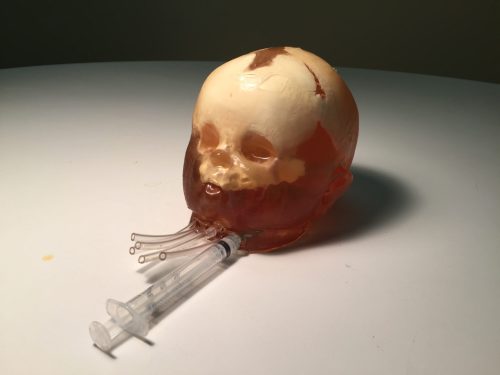 The Newborn Head (Dynamic) phantom is designed for medical imaging of blood flow beneath the skull. It resembles an average newborn head, using realistic tissue-mimicking materials suitable for Ultrasound, MRI, and X-Ray/CT. The skull pieces are individually cast from patented epoxy-based bone material.
The Newborn Head (Dynamic) phantom is designed for medical imaging of blood flow beneath the skull. It resembles an average newborn head, using realistic tissue-mimicking materials suitable for Ultrasound, MRI, and X-Ray/CT. The skull pieces are individually cast from patented epoxy-based bone material. -
 The Advanced Newborn Torso phantom closely resembles the anatomy of an average-sized newborn torso. It is constructed with realistic tissue-mimicking materials suitable for MRI and X-Ray/CT imaging. The phantom features a water-fillable umbilical cord and bladder, facilitating catheterization training.
The Advanced Newborn Torso phantom closely resembles the anatomy of an average-sized newborn torso. It is constructed with realistic tissue-mimicking materials suitable for MRI and X-Ray/CT imaging. The phantom features a water-fillable umbilical cord and bladder, facilitating catheterization training. -
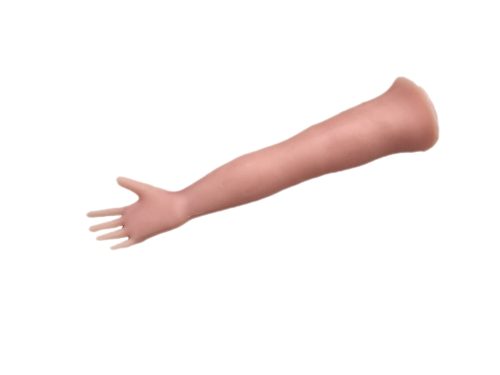 The Newborn Arm Phantom is designed to resemble the anatomy of a healthy newborn baby’s arm. Made from realistic materials, it is suitable for ultrasound-guided IV training for healthcare professionals. This durable and long-lasting phantom allows for practice in intravenous injections under ultrasound guidance, with permanently prefilled blood vessels, eliminating the need for additional fluid.
The Newborn Arm Phantom is designed to resemble the anatomy of a healthy newborn baby’s arm. Made from realistic materials, it is suitable for ultrasound-guided IV training for healthcare professionals. This durable and long-lasting phantom allows for practice in intravenous injections under ultrasound guidance, with permanently prefilled blood vessels, eliminating the need for additional fluid. -
 The Adult Human Skull with Brain Phantom is a versatile tool ideal for medical research and treatment planning, specifically for non-invasive HIFU brain surgeries and medical imaging studies. Resembling the Head Phantom but without skin-mimicking tissue, this model features a realistic three-layered structure with an inner diploe layer, closely resembling the average human male skull. Crafted from a patented epoxy-based bone material, it ensures compatibility with Ultrasound, MRI, and X-Ray/CT applications. Customization options for different parts of the skull are also available upon request. The phantom incorporates the complete ventricular system, including lateral, third, and fourth ventricles. These inflatable ventricles simulate realistic pressure dynamics within the brain, closely approximating actual cerebral anatomy. The ventricles can be filled with various liquids to achieve desired effects. For MRI applications, the phantom’s tissues exhibit realistic T2 relaxation time values, making it an excellent fit for T2-weighted MRI imaging techniques. Proton Density imaging methods also yield high-quality outcomes. While T1-weighted techniques are viable, T1 values are less accurate, falling within the approximate range of 100 ms. Before imaging the phantom, please fill the ventricles with water (or chosen contrast agent) using the tube on the back of the brain. After filling the ventricles, plug the tube with a removable blue silicone plug.
The Adult Human Skull with Brain Phantom is a versatile tool ideal for medical research and treatment planning, specifically for non-invasive HIFU brain surgeries and medical imaging studies. Resembling the Head Phantom but without skin-mimicking tissue, this model features a realistic three-layered structure with an inner diploe layer, closely resembling the average human male skull. Crafted from a patented epoxy-based bone material, it ensures compatibility with Ultrasound, MRI, and X-Ray/CT applications. Customization options for different parts of the skull are also available upon request. The phantom incorporates the complete ventricular system, including lateral, third, and fourth ventricles. These inflatable ventricles simulate realistic pressure dynamics within the brain, closely approximating actual cerebral anatomy. The ventricles can be filled with various liquids to achieve desired effects. For MRI applications, the phantom’s tissues exhibit realistic T2 relaxation time values, making it an excellent fit for T2-weighted MRI imaging techniques. Proton Density imaging methods also yield high-quality outcomes. While T1-weighted techniques are viable, T1 values are less accurate, falling within the approximate range of 100 ms. Before imaging the phantom, please fill the ventricles with water (or chosen contrast agent) using the tube on the back of the brain. After filling the ventricles, plug the tube with a removable blue silicone plug.

